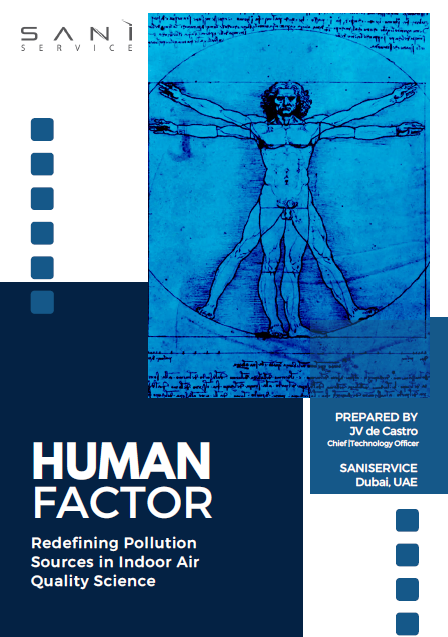
Humans: The Unseen Pollutants in Our Indoor Spaces
Indoor Air Quality is emerging as one of the most critical public health concerns of the 21st century. As urban living intensifies and people spend more than 90% of their time indoors, a pressing question surfaces: what—or who—is polluting the air we breathe in our homes, workplaces, schools, and public buildings? Conventional wisdom points to building materials, external pollutants, or poor ventilation as the primary culprits. However, groundbreaking new research titled “Humans as the Principal Pollutants of Indoor Environments” reveals a surprising and scientifically validated reality: we, the occupants, are among the most significant contributors to indoor air pollution.
Through everyday activities—breathing, shedding skin, using personal care products, cooking, and even simply moving—we introduce a cocktail of pollutants into indoor spaces. These include carbon dioxide (CO₂), volatile organic compounds (VOCs), particulate matter (PM), and bioaerosols. Beyond chemical pollutants, human presence alters the thermal and microbial dynamics of indoor environments by influencing humidity, temperature, and microbial load. Our bodies act as both emitters and catalysts of air quality decline, significantly altering the physical and biological landscape of the spaces we occupy.
This research compels us to rethink building design, air filtration, and behavior, positioning the human factor as central to any sustainable indoor air quality strategy.
Key Findings You Need to Know
- CO₂ and Cognitive Decline: Humans exhale CO₂ as a byproduct of metabolism. When indoor levels exceed 1000 ppm, cognitive function begins to decline. In poorly ventilated spaces, this happens quickly and silently.
- The Microbial Imprint: Our skin, mouths, and guts shed millions of microbial cells per hour. Dominant bacterial genera such as Staphylococcus and Corynebacterium are found colonizing indoor air and surfaces.
- Temperature and Humidity Impacts: Human metabolism releases heat and moisture, altering physical conditions that foster mold growth and trigger chemical reactions within confined spaces.
- Particulate Matter and Human Activity: Even mundane activities like walking or vacuuming resuspend fine particles. Studies show human occupancy alone can increase PM2.5 concentrations by up to 30%.
- HVAC Systems: A Hidden Crisis: Based on Saniservice’s in-depth assessments from 2009 to 2025, 92% of all tested air conditioning systems were found to harbor fungal growth, in addition to high levels of dust and microbial residues.
How to Mitigate Our Impact (Indoor Air Quality and indoor environmental quality)
The study doesn’t just stop at diagnosis. It proposes actionable, science-backed solutions:
- Smart ventilation systems that respond to CO₂ levels in real time.
- Low-emission materials and natural fabrics that reduce off-gassing.
- Real-time IAQ monitoring using compact, connected sensors.
- Regular HVAC disinfection, proven to drastically reduce microbial threats in the air we breathe.
Download the Full Report
This study marks a critical turning point in how we understand indoor air quality. It compels us to recognize that humans are not merely passive victims of poor indoor air quality—they are, in fact, its leading contributors. Every moment spent indoors results in emissions that directly impact indoor air quality, from carbon dioxide produced through respiration to volatile organic compounds (VOCs) released through cosmetics, cleaning products, and materials we use every day.

The growing evidence shows that indoor air quality is most often compromised not by outside pollutants, but by the very presence and behavior of occupants. Human activity such as cooking, vacuuming, using synthetic furnishings, and even walking contributes to deteriorating indoor air quality through the release of particulate matter, microplastics, and bioaerosols. Even temperature and humidity levels, which affect chemical interactions and microbial growth, are shaped by human metabolic heat and moisture—further influencing indoor air quality.
Understanding this dynamic allows for a transformative approach to improving indoor air quality. Rather than relying solely on filtration or ventilation, a more integrated strategy should involve smarter materials, behavior-conscious design, and real-time monitoring systems that maintain optimal indoor air quality. This proactive model redefines environmental health within buildings and allows for the development of spaces that truly support well-being and productivity through improved indoor air quality.
Ultimately, this research reframes the role of humans—from bystanders to central actors in shaping indoor air quality. If we want to create environments that enhance health, performance, and comfort, we must accept our responsibility in managing indoor air quality and take deliberate steps to mitigate our impact. Only by confronting the human element can we build a sustainable future for indoor air quality management.



Leave a Reply